Polyhouse farming is the process of growing plants in a climate-controlled environment. The specialty of this farming is it provides an optimal growing environment for the plants. It even controls other factors that affect plant growth.
- Do you want to grow crops in minimal space?
- Or do you need an equal distribution of light throughout the Polyhouse?
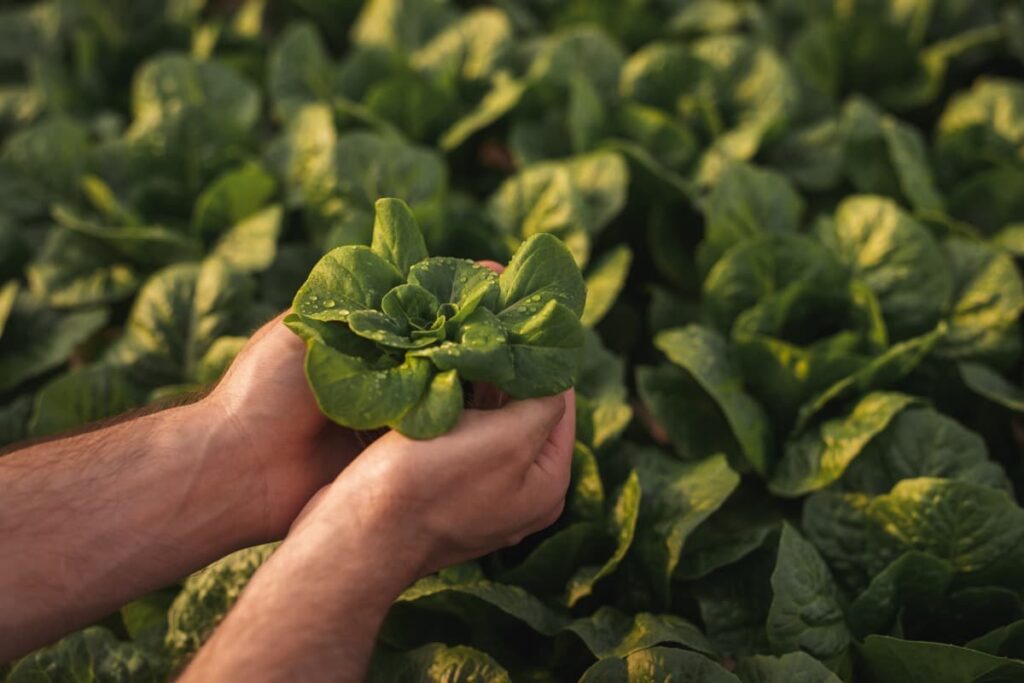
Make sure you answer the above questions before the construction of a Polyhouse. In general, playhouses are great for growing crops that require specific conditions you may not get from the external environment. When I say Polyhouse, think about a greenhouse as they seem similar. However, greenhouses don’t allow full-spectrum lighting. As a result, they lead to slow or stunted growth in some plants. For instance, let’s take the example of growing tomatoes.
Tomatoes require high levels of sunlight for healthier growth. Furthermore, harvesting them leads to more sun exposure reducing the tomatoes’ shelf life. This whole scenario ultimately reduces growers’ profits. A Polyhouse farm is the best solution for the above scenario. It allows plants to grow in optimal conditions without exposure to direct sunlight. This efficient growing method also benefits those with limited space or climate conditions for outdoor crop production.
Polyhouse helps you grow several plants, including fruits, vegetables, and flowers. The efficient Polyhouse enables growers to maximize profits by increasing the number of crops they can produce per year and offering multiple products creating more demand in the market. Most Polyhouse designs incorporate supplemental lighting that mimics sunlight and enables growers to extend their seasons when natural sunlight is not as abundant. There are two main types of Polyhouse farming- Hydroponics (soilless) and Aquaponics (combined soilless culture).
How to Start Polyhouse Farming from Scratch
Greenhouse v/s Polyhouse
Greenhouse and Polyhouse seem almost the same. Many people need help distinguishing between the two. This is the reason they’re often used interchangeably. However, there is a difference between Polyhouse and greenhouse farming. Greenhouses can only be opened by lifting the glass panel, making them less secure with a high risk of loss to predators like birds or animal damage due to broken panes. On the other hand, Polyhouse has no movable parts that need repair regularly.
In case you missed it: Indian Government Subsidies for Polyhouse Farming: How to Double Your Agricultural Profits
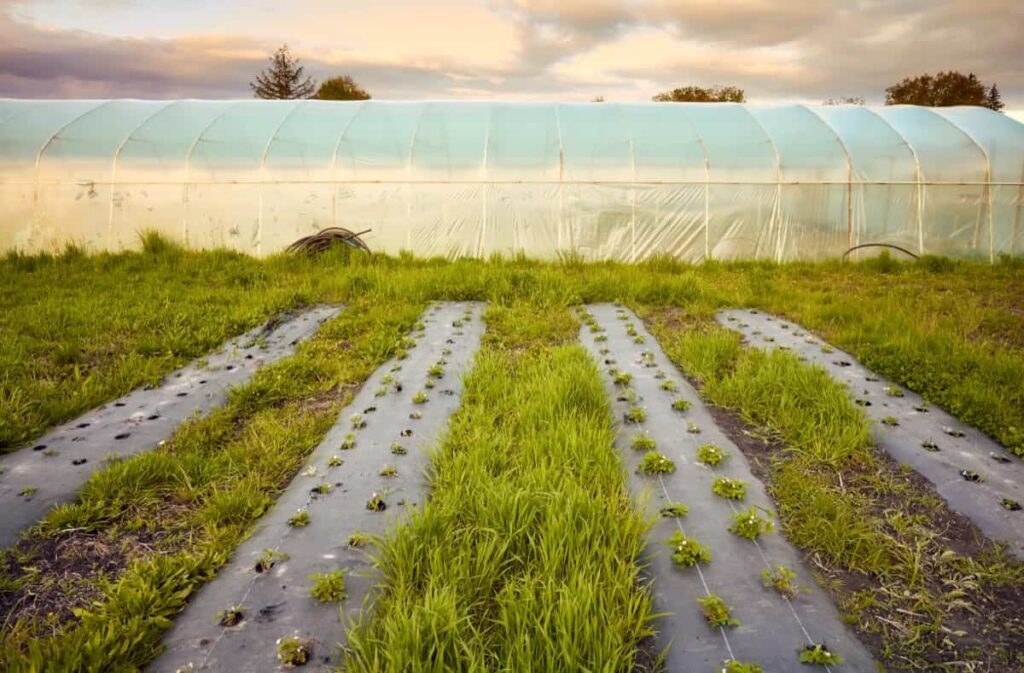
The transparent plastic sheeting used in Polyhouse can be easily patched with plastic repair tape for small holes or tears during the growth or transportation of materials into the house. This reduces maintenance time and the cost required per year. In contrast, greenhouses are more expensive than Polyhouses. Hence, Polyhouse is considered a more economical, reliable, and space-efficient form of greenhouse growing.
Benefits of Polyhouse Farming
- Need a massive space to grow crops? Want to grow crops in minimal space? If so, Polyhouse farming is an ideal choice. It produces a much larger yield than traditional outdoor farms and works well with hydroponics and aquaponics systems.
- Environmental Conditions – Are you looking to farm in an area with extreme temperatures, limited sunlight, poor soil quality, or other factors limiting plant growth? Polyhouse Farming may be your ideal option as it helps mimic indoor conditions providing optimal growing conditions for plants.
- Extended seasons – Polyhouses help you make more money by allowing you to grow crops outside their regular season. Since non-seasonal crops are rarely available, they sell better and garner colossal profits. This is especially true if you deal with short days or long nights.
- Phytoremediation – If you focus on sustainable farming, Polyhouses can be used for phytoremediation, where the plants absorb pollutants to cleanse soils and water sources. A study in China showed crops could absorb lead, mercury, arsenic, chromium, copper, and nickel from the soil without being damaged or tainted by heavy metals. This is a great way to turn a problem into an opportunity.
- Transportation/Food Miles – For those interested in decreasing food miles and living more sustainably, this provides one way of doing so as they are grown locally indoors rather than transported over great distances during transit.
- Production – Through the Polyhouse facility, you can produce more food with fewer resources. This is especially true if you grow hydroponically because there is no water loss due to evaporation or drainage issues.
Starting Polyhouse Farming from Scratch
Starting Polyhouse farming is an easy process. However, it is not good to start with a big Polyhouse. You need to build a small or medium-sized one to determine whether it’s profitable. The most important thing while building the Polyhouse is selecting the best material and location. Here’re a few steps to follow while building a Polyhouse.
In case you missed it: Sustainable Greenhouse Farming: The Future of Agriculture
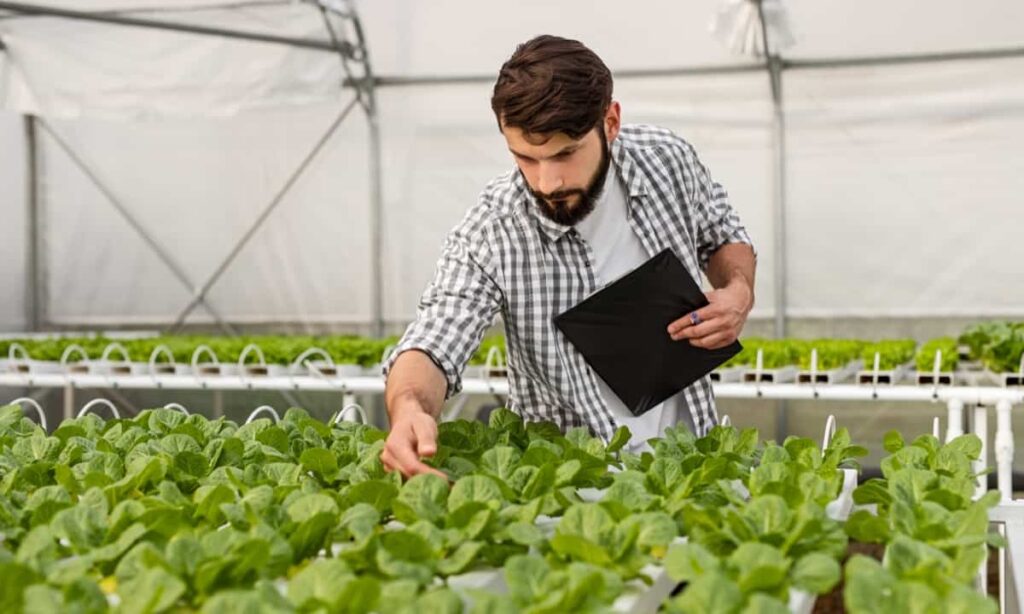
Choosing the Material for Polyhouse
The foremost thing to do is choose the right materials. A few Polyhouse materials include plastics, glass, and aluminum. Select your material depending on your budget and farming goals. For instance, let’s assume you want to start commercial farming. In that case, it’s better to go with aluminum or steel because these materials can be reused effortlessly.
In contrast, plastic must be replaced after a few seasons as it gets damaged by varied temperature effects. Suppose you want to avoid chemicals from plastic. In such a case, it’s better to go for UV-stabilized ones with special additives than regular plastics. The robust UV-stabilized plastics save the Polyhouse from harmful ultraviolet rays from the sun.
Select the Right Location for Polyhouse
Next, consider the location of your Polyhouse. This is very important to prevent unnecessary problems in the future while growing crops. Also, make sure there aren’t any trees around the Polyhouse blocking sunlight that affects photosynthesis. Also, consider surrounding areas. Check for water resources. In general, water sources should be at least 10 meters away from the structure as this reduces the chances of diseases like damping off due to high humidity levels in the soil or water. Sometimes, wet, humid air present in the soil also leads to these diseases.
Select the Size of the Polyhouse
Next, select a size for your Polyhouse according to your requirements and preferences. For example, the large Polyhouse consumes more time to set up but provides a better yield per area. This is why you should choose your Polyhouse size according to your needs and resources. Many factors, such as location, income, and requirements, affect your size selection. For instance, you want to grow exotic fruits not available locally. And in such cases, it’s better to go with a smaller Polyhouse to reduce electricity costs, etc.
Select the Design for Polyhouse
Decide on the design for your Polyhouse. There are hundreds of Polyhouse designs to choose from. However, the A-frame design is the most popular and covers a large area providing easy access to crop harvesting. This design also offers enough light and ventilation inside the greenhouse, so you do not need additional fans or misters for cooling or humidity control. Consider Dutch door design for crops like tomatoes, where there is a lot of water loss due to transpiration. This type of design has a double door. So, it ensures proper ventilation and reduces the growth of gray mold due to humidity levels in the greenhouse.
Choose a Water Source
The next step can be to select a water source for Polyhouse farming. It would help if you considered selecting a location near the Polyhouse so that it’s easy to access. Or else, choose an automatic irrigation system that sends adequate water to the plants without over-watering them. It even prevents damage due to excess moisture content. If you don’t have such equipment, go ahead with soil watering instead of overhead watering, reducing problems like damping-off and other related issues.
In case you missed it: How to Grow Jalapeno Peppers from Seed: A Step-by-Step Guide for Types, Seed Germination, and Planting
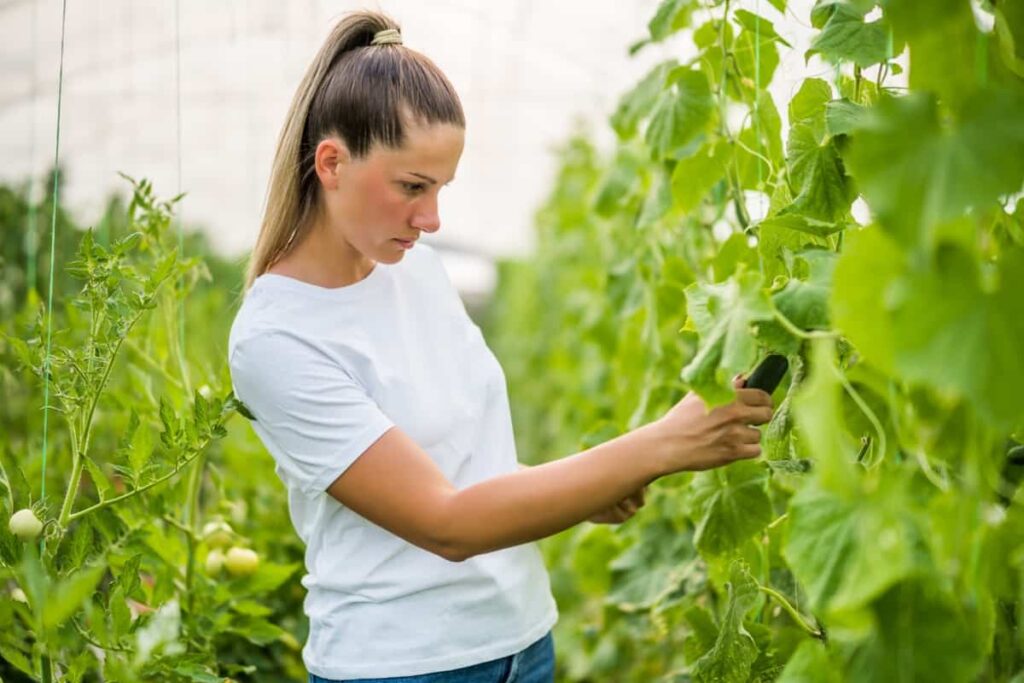
Sort Energy Source
The next step is to select an energy source for your greenhouse. You can use a small-scale generator or install solar panels for power generation. Also, consider the number of light bulbs and heaters you use. The thumb rule is to use more light bulbs and heaters than your actual production goal so that a backup and enough wattage are available if anyone needs help. For example, experts suggest around 200 w extra if a 100 w halogen spotlight falls while working.
Build Your Polyhouse
- First of all, make sure you provide a foundation.
- Install the frame using metal or wood to build the structure, depending on your chosen material.
- Install sheeting/plastic for waterproofing. If you want natural light in your Polyhouse, then leave some spaces in between sheets or cut them in such a way that sunlight enters inside the structure quickly.
- Add doors and vents to ensure proper airflow movement throughout your greenhouse area that supports healthier plant growth under ideal conditions.
- Cover the frame with transparent plastic sheets for Polyhouse film.
Figure Out Maintenance Source
Now, let’s figure out a source for regular maintenance of your Polyhouse. A few parts need special attention, such as the floor, heater, fans, etc. So, it’s better to get all this information sorted before starting the construction work. After all, no one wants to deal with issues once their plants are ready to harvest. You can either go with a manual option if you’re confident in your skills or choose an automated system depending on the size of your Polyhouse.
In case you missed it: Best Organic Fertilizers to Feed Indoor Plants: Homemade and Natural Recipes
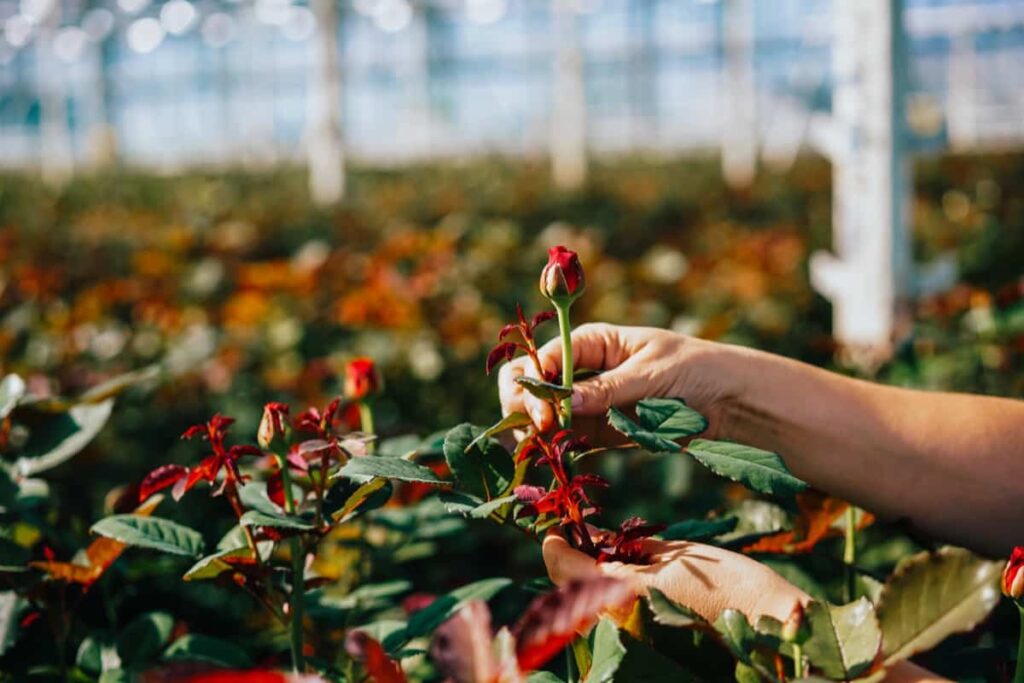
Is Polyhouse Farming Cost-effective?
The cost of a Polyhouse depends on the size and the \equipment you choose to install. Usually, it’s observed that small Polyhouses aren’t as effective as larger greenhouses as they don’t have enough space for growth due to a lack of proper light penetration throughout the structure. This means one should go with a large design or multiple miniature greenhouses if one cannot bear high costs. On the other hand, the larger Polyhouses provide the plants with enough sunlight and water flow throughout all seasons leading to better harvests without many losses.
Sometimes, it’s also observed that Polyhouse farmers need help understanding the basic science governing the growth of different plants. As a result, they lose money on things like ventilation and other resources. So, finally, make sure you properly research your plant and climate conditions before you start working to reduce costs and time for growing new plants if any disaster strikes.
Conclusion
Building a greenhouse is easy if you have the correct information and equipment. Always consult with an expert before jumping into any project and try to figure out ways to benefit future harvests. Also, keep in mind that there are four types of Polyhouse. This means that you may need to build around 4-5 separate Polyhouses depending on your requirements if you plan to grow several plants.
In case you missed it: Humic Acid Fertilizer Uses: Role, Application Methods, Dosage, and Benefits for Sustainable Agriculture
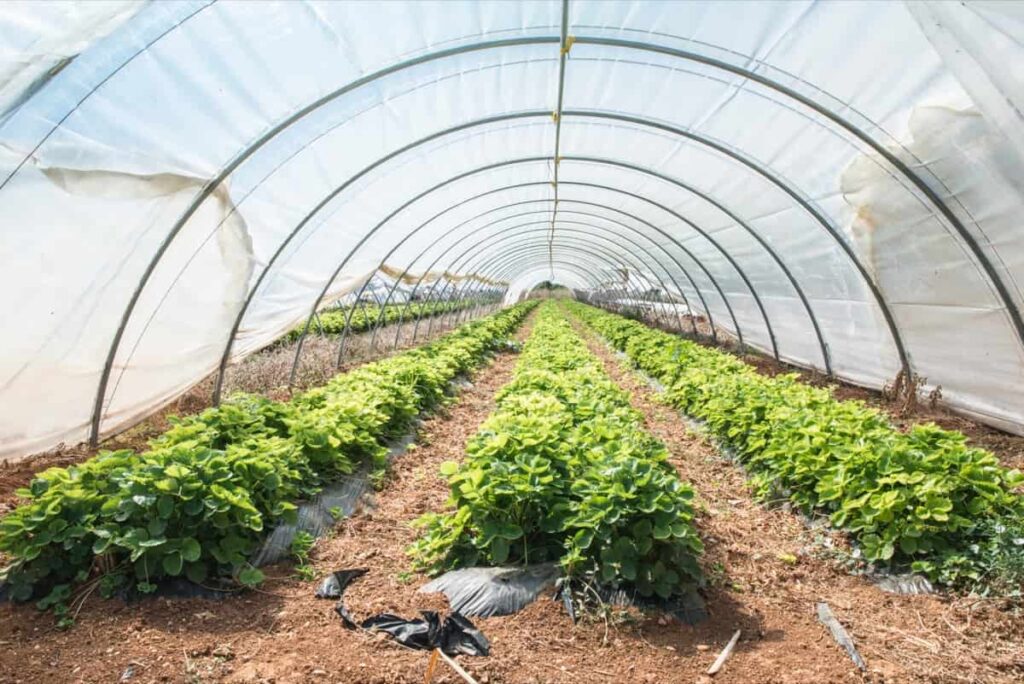
However, this also means a lot of competition in the market-leading to better prices for healthy plants. This conclusion brings us to the end of our polyhouse farming article, where we explained all steps involved in building an effective Polyhouse so one can reap maximum benefits. This information will prove valuable to you and help you start growing plants.
- Budget Friendly Sheep Shed Ideas: Cheap and Low-Cost Tips
- How Much Do Cattle Farmers Make: Revenue Streams in Cattle Farming
- Management Pests and Diseases in Your Cotton Field
- Sheep Farming Business Plan for Beginners
- Aquaponic Farming at Home: A Step-By-Step Guide
- Profitable Village Farming Business Ideas in 2024
- High-Yield Aquaculture: Fast-Growing Fish for Farming
- Effective Fish Pond Construction Techniques for Beginners
- Irrigation and Water Management in Pineapple Farming
- Blossom to Harvest: Mastering Flowering and Pollination in Papaya Farming
- Pig Fattening Essentials: From Selection to Sale for Beginners
- Raising Wagyu Cattle: A Complete Guide for Premium Beef Production
- Soil Types and Their Water Holding Capacity
- Optimizing Irrigation Schedules for Coconut Groves for Enhanced Yield
- Espresso Your Garden: Coffee Grounds for Healthier Acid-Loving Plants
- The Best Soil Mix for Snake Plants: How to Mix Your Own Snake Plant Soil
- Green Thumb Success: Expert Tips for Cultivating Greenhouse Beans All Year Round
- Bloom All Year Round: The Ultimate Guide to Indoor Hyacinth Care
- Eco-Friendly Gardening: How to Make Liquid Fertilizer from Kitchen Waste
- Ultimate Guide to Grow Anise in Pots: Explore Seed Propagation to Harvesting
- Guide to Raising Chester White Pigs: Discover Breed Facts to Growth Management
- Mastering the Elegance: The Ultimate Guide to Weeping Cherry Tree Care, Planting, and Maintenance
- Ultimate Guide to Planting Garlic in Grow Bags: Growing Strategies for Beginners
- How to Fix Spider Plant Leaf-Related Problems: Natural and Organic Remedies
- 10 Reasons Why Your Tulsi Plant is Shedding Leaves: Home Remedies and Solutions
- Optimizing Growth and Yield: The Advantages of Palm Bunch Ash Fertilizer
- Utilizing Neem Oil Extract as a Natural Pesticide for Hydrangea
- From Soil to Harvest: Various Ways in Which Farmers Can Use AI Tools
- Steps to Encourage and Induce Citrus Flowers: A Comprehensive Guide
- How to Fix Snake Plant Leaf-Related Issues: Natural and Organic Remedies
- Transform Your Garden into a Fragrant Oasis with Raat Ki Rani (Night Blooming Jasmine)
- Discover the Ideal Chicken Breeds for Philippine Farms
- How to Create a Poultry Egg Farm Business Plan for Profits
- Grow Lemon Cucumbers Like a Pro: Insider Techniques for Bountiful Yields
- Ultimate Guide to Caring for Your Pink Princess Philodendron: Tips for Thriving Variegation
- Areca Nut Profit Per Acre: Calculating Yield and Cost of Cultivation
